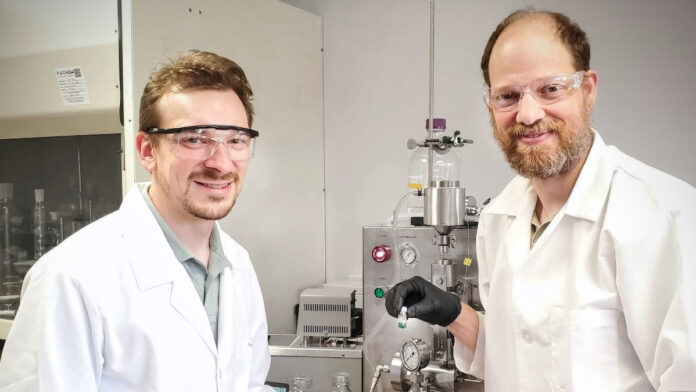POP Biotechnologies and the Coalition for Epidemic Preparedness Innovations (CEPI) have announced a new collaboration to accelerate the development of vaccines against future pandemic threats, including a potential Disease X.
Backed by up to $1.5m in funding from CEPI, the partnership will advance POP BIO’s SNAP (Spontaneous Nanoliposome Antigen Particleization) platform—a plug-and-play technology designed to enable rapid-response vaccine development through streamlined protein purification and nanoparticle delivery.
The technology has been designed to rapidly develop potent nanoparticle vaccine candidates, while simultaneously purifying antigens. Inert protein fragments of a disease-causing pathogen are added to a vaccine to teach the body’s immune system how to recognise and defend against it.
“Antigens added to vaccine formulations have to be purified to ensure safety, efficacy and consistency of the vaccine. However, conventional purification methods can be costly and involve multiple steps, typically lasting several days, slowing down the vaccine development process” said Kent Kester, executive director of vaccine R&D at CEPI.
The SNAP technology makes use of a small protein tag, a polyhistidine or his-tag, that is attached to the vaccine antigens—for a purification technique commonly used in basic protein research—and is also used to embed them into small, spherical liposomes combined with metallic cobalt to aid the immune response. Compared to traditional purification methods, the enhanced technique could rapidly remove potential contaminants from vaccine antigens in as little as 30 minutes.
“As every day counts during an incipient outbreak, faster development of purified vaccine constructs could help more quickly contain a fast-spreading new or re-emerging viral threat before it spreads to pandemic proportions, in line with the 100 Days Mission,” Kester said.
SNAP’s plug-and-play design could also be beneficial in an outbreak as the antigen sourced from the disease-causing pathogen could be easily and quickly “plugged” into the vaccine platform for faster development and deployment of vaccines. With fewer, less complex stages involved in its purification process, the SNAP technology could also be more efficient than traditional protein vaccine purification methods, producing higher antigen yields that help extend available vaccine supplies and allow more people to be vaccinated in an outbreak.
“The dual use of the his-tag to facilitate protein purification and to then easily, rapidly and stably convert those proteins into potent nanoparticle vaccine candidates has been instrumental for the momentum POP BIO has achieved,” said POP BIO co-founder Jonathan Lovell.
“Importantly, when the his-tag is used to anchor proteins on the surface SNAP nanoparticles, there is no significant immune response against the tag itself, as observed in human clinical testing.”
The SNAP technology has already been tested through a large-scale, late-stage phase III trial of SNAP’s COVID-19 vaccine, where it demonstrated positive safety and efficacy results. Positive results were also published earlier this year in the journal Cell Biomaterials for an avian H5N1 influenza vaccine developed with POP BIO’s SNAP platform in preclinical models.
The CEPI-supported project will first explore the technology’s potential to protect against severe fever with thrombocytopenia syndrome (SFTS), a tick-borne viral disease affecting East Asia, in preclinical trials. Led by POP BIO, the project will be performed by an international team of researchers at the University of Buffalo and SUNY Upstate Medical University in the US and The National Institute of Infectious Diseases, within the Japan Institute for Health Security. CEPI is exploring options to select antigens for testing from CEPI’s existing partners, including partners using AI to inform antigen design.
If the project is successful, the SNAP platform has the potential to be rapidly adapted to develop vaccine candidates against other pathogens, including a Disease X.
Jim Cornall is editor of Deeptech Digest and publisher at Ayr Coastal Media. He is an award-winning writer, editor, photographer, broadcaster, designer and author. Contact Jim here.


